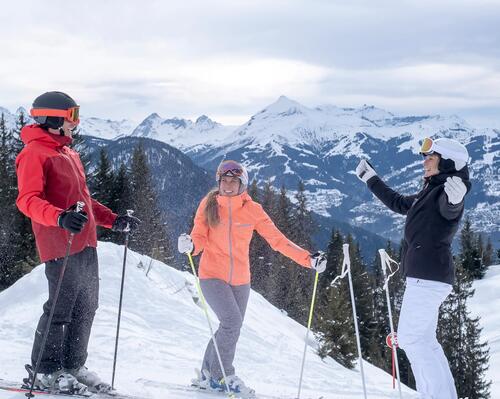Exceptional gliding guaranteed. Once you’ve mastered the movement, you’ll feel like you’re skiing on rails.
Basic stance and balance
Your skis should be parallel and shoulder-width apart. Your knees should be slightly bent, your shins pressed forward in your ski boots, and your weight should be centered on your outside ski. Your upper body should be upright and facing forward, your shoulders flat in the direction of the skis, with your hands in front of you.
Controlling the angle and pressure of your skis
Your outside ski is your main tool for making turns. By transferring your weight to it, you place pressure on the ski, enabling you to make your turns. Conversely, the inside ski is slightly relieved of weight, adding stability and control. The knee of this leg naturally bends during the movement.
As for your upper body, it plays a crucial role in staying balanced. Your torso acts as a pivot, helping to maintain stability, while your legs provide direction. It's important to keep your legs parallel to the piste to maintain correct posture.
Efficient use of poles
Poles have no place in classic carving, they are only useful for balancing.











